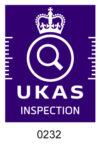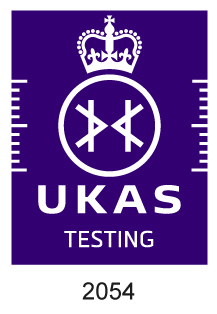Menu
close
**LATEST** New quantitative face fit services for RPE
Book in today
Earlier this month, July 2023, The Times launched its ‘Act Now on Asbestos’ campaign, calling on the UK Government to develop a plan to remove asbestos from all schools in the UK in the next 40 years.
For AEC’s Technical Director, Darren Evans, it’s a welcome campaign. He has been a passionate advocate for asbestos safety in schools for many years and was consulted as part of a pivotal House of Commons Work and Pensions Committee report on this subject earlier this year.
In this article, Darren explains why this campaign is needed, as well as practical steps schools can take to start managing asbestos safely before the new academic year.
If you’re concerned that asbestos isn’t being properly managed in your school, read on to see what you can do to make sure asbestos is safely managed in your buildings.
We’ve known for several years that there is a significant number of schools with significant quantities of asbestos. This issue even featured in a storyline of Grange Hill in 1986. Since then, asbestos has been banned completely in construction in the UK, but we’re still dealing with the problems its use has left behind.
In the past 40 years, over 10,000 staff and students in schools have died from historical asbestos exposure. It reflects a wider trend in ‘occupational exposure’ (being inadvertently exposed to asbestos in your workplace) becoming a greater cause of asbestos-related illness or death than ‘industrial exposure’.
As opposed to other commercial or public buildings, however, schools are affected by a unique set of circumstances:
1) Asbestos is widespread – it’s estimated to be installed in at least 21,500 out of 35,000 schools in Great Britain.
2) It’s often found in a degraded condition – particularly in system-built CLASP or RoSLA buildings (which were only meant to be temporary structures) that are effectively falling apart.
3) It can be particularly poorly managed in schools – between a lack of resources, knowledge or ability, proper asbestos management protocols are often not followed.
4) People with the legal duty to manage asbestos might not even know that they are ‘duty holders’ – I’ll explain this in more detail later in the article, including how to find out if you are the duty holder.
While a lot of energy and effort from HSE go into ensuring asbestos is removed safely, they haven’t been able to commit the same approach into inspecting schools for asbestos, mostly due to the sheer scale of the issue. This means that regulations go unenforced, and between 2022-23, just 0.01% of schools (400) were inspected by HSE for compliance with management regulations.
There’s also one other key distinguishing factor: schools are full of children, who are boisterous. You can tell a room full of adults not to touch ceiling tiles that are full of asbestos, but if you tell a classroom of kids, what are they going to do?
As I have already alluded to, ‘RoSLA blocks’ and system-built CLASP buildings from the period 1940-80 are hotspots for asbestos. This is because they were never meant to be permanent structures – both were made to cope with more students and coming into schools, due to a rising post-war population and later the mandatory school leaving age increasing. So, they’re falling apart, and the asbestos inside them can be in a dangerous condition.
However, any building constructed before the year 2000 may contain asbestos – it’s still installed in over 1.5 million buildings in the UK.
In any school built before 2000, it might be found in various places, including:
Following current guidance, it remains installed in so many buildings because some asbestos-containing materials are safer left ‘as they are’ – rather than disturbed.
However, if the location of asbestos on the school premises isn’t known (which it frequently isn’t, due to a management plan not being kept up to date) then it is far more likely it will inadvertently be disturbed or degrade over time. This is how it becomes more likely to release harmful fibres into the air.
AEC has over 25 years of experience in supporting schools to train duty holders, conduct management surveys, and build a long-term plan of action that will help to keep schools compliant and safe.
If your school has been affected by any of the issues in this article, please do reach out to me and my team at [email protected] or call 0203 384 6175.
While the broader context is concerning – and you may have already organised maintenance work during the holidays – there are steps that trustees, governors, and other health and safety leads in schools can take before the start of the new academic year to make sure that asbestos is safely managed:
1) Find out who the duty holder is – this is frequently someone with budget authority. This can be a local authority, diocese, board of governors, or academy trust, and if you are a headmaster, it might even be you.
2) Get access to the asbestos management plan for the school – this should detail everywhere asbestos is on-premises. If it is out of date, you will need a survey to bring it up to date (and stay legally compliant).
3) Ensure all staff understand that they can be affected by asbestos exposure – remember, they do not have to work directly with is to disturb it.
4) Conduct an asbestos survey – you may have multiple kinds of asbestos on your premises. A survey can inform you of their locations and conditions, which gives you the information you need to remove ‘high-risk’ asbestos materials and prevent building users from being exposed.
5) Ensure that plans are in place to inspect and reinspect asbestos in your premises, and to conduct an annual review of your management plan.
AEC has over 25 years of experience in supporting schools to train duty holders, conduct management surveys, and build a long-term plan of action that will help to keep schools compliant and safe.
If your school has been affected by any of the issues in this article, please do reach out to me and my team at [email protected] or call 0203 384 6175.

Darren Evans is AEC’s Technical Director. He is also a member of the Asbestos Testing and Consultancy Association (ATaC) Management Committee, and British Occupational Hygiene Society (BOHS) Faculty of Asbestos Assessment and Management Committee.
Asbestos is a naturally occurring fibre that was widely used in construction and other industries until the late 1990s. The three types of asbestos fibres most used in the UK are: blue (crocidolite), brown (amosite) and white (chrysotile)
Before its dangers were known, asbestos was often used in buildings for insulation, flooring, roofing, and was sprayed on ceilings and walls. Its use is now banned in the UK, but buildings constructed before the year 2000 may still have asbestos in them. Materials containing asbestos are referred to ‘ACMs’ (asbestos containing materials). Asbestos can also be found in soils, where ACM waste has been disposed.
If asbestos inside buildings remains intact, it poses very little risk. It’s only when it’s damaged or disturbed that tiny asbestos fibres can be released into the air and enter your lungs when breathing. Breathing in asbestos fibres can significantly damage your lungs and their lining. The symptoms of asbestos-related conditions take many years – even decades – to appear after the original exposure to asbestos. This means that exposure a long time ago might only show up as a condition today.
UK law is very strict about managing ACMs (asbestos containing materials). It is heavily regulated to ensure best practice and safety of anyone who may come into contact with it. The Duty to Manage Asbestos is the responsibility of the Duty Holder and the guidelines are included in the Control of Asbestos Regulations 2012 (CAR 2012). The Regulations set out your legal duties and the ACOP and guidance give practical advice on how to comply with those requirements. Download the CAR 2012 regulations from our resource library.
The Duty Holder is the owner of the non-domestic premises or the person or organisation that has clear responsibility for the maintenance or repair of non-domestic premises.
The Duty Holder is required to manage the risk from asbestos by:
1. Finding out if there is asbestos in the premises, its location and what condition it is in.
2. Keeping an up-to-date record of the location and condition of the ACMs.
3. Assessing the risk from the material
4. Preparing a detailed plan of how the ACMs risks will be managed
5. Taking steps to put the plan in action
6. Reviewing and monitoring your plan
7.Having a system to inform others about the location and condition of ACMs
There are 2 main types of survey: Asbestos Management Surveys and Asbestos Refurbishment/Demolition Surveys.
A management survey will be required during the normal occupation and use of the building to ensure continued management of the ACMs in situ. As part of your management plan re-inspection surveys will be carried out. These are periodic condition inspections that checks for any deterioration of ACMs caused by natural degradation, accidental damage or poor removal practice.
A refurbishment/demolition survey will be necessary when the building (or part of it) is to be upgraded, refurbished or demolished.
Regulation 4, CAR 2012 stipulates that the duty holder manages the risk of from asbestos by finding out if there is asbestos in the premises, its location and what condition it is in. It also allows social housing providers to comply with risk assessments as outlined in Regulation 5, CAR 2012. An asbestos survey will provide sufficient information for: an asbestos register and plan to be prepared, a suitable risk assessment to be carried out and a written plan to manage the risks to be produced.
Every survey is unique, depending on its purpose and the size, usage and lifespan of the premises. We work with our clients to provide a tailored service specific to their needs. Generally, here’s what to expect during an AEC survey:
Management surveys and Re-inspection surveys are less intrusive than a refurbishment/demolition survey. The surveyor will use plans/maps of your building to identify the location of suspected ACMs, they will take photographs to show the condition of the materials and record all their findings. The surveyor will not disturb any suspected asbestos other than take a small representative sample (typically no bigger than 1cm2). In the case of any area being inaccessible the surveyor will record ‘presumed’ asbestos. Any material samples will be securely contained and labelled on site before being transferred to our laboratory for analysis.
Refurbishment and demolition surveys are more intrusive surveys. The surveyor will work alongside your development plans to inspect areas to identify any ACMs that may be disturbed throughout refurbishment works. In the case of demolition, the whole building will be surveyed. The surveyor will access all areas of the building marked for demo/refurbishment (such as floor coverings, above false ceilings, lofts, inside risers, service ducts, lift shafts, underground rooms, and under crofts). This will also involve sampling any areas that were ‘presumed’ asbestos in other less intrusive surveys. The surveyor will not disturb any suspected asbestos other than take a small representative sample (typically no bigger than 1cm2). Specialist surveyors trained to work at height and in confined spaces will carry out surveys in ‘hard to reach’ areas, and it may involve using specialist access equipment. Any material samples will be securely contained and labelled on site before being transferred to our laboratory for analysis.
Our clients benefit from AEC’s online portal. Available 24/7 all your records are contained in an easy-to-use management system. You can view all your sites survey data, risk items and action plans in real time. View AEC’s Client Portal here.
UKAS is the National Accreditation Body for the United Kingdom. They assess and accredit organisations that provide services including certification, testing, inspection and calibration. UKAS accreditation ensures the highest levels of impartiality and competence through a continuous assessment process. This allows clients to have confidence in the quality of services provided. View our UKAS accreditations here.

